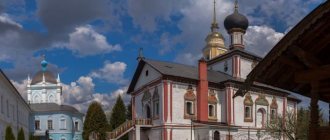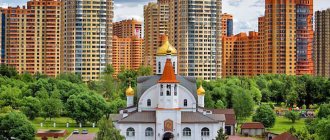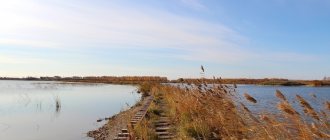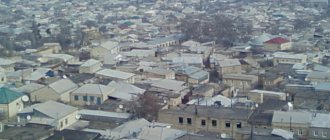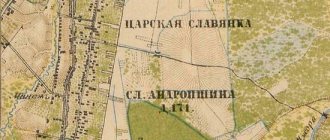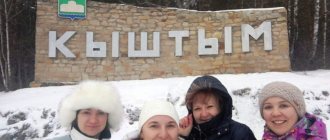Roshal: it was and became. How has the furthest city in the Moscow region changed?
A dance floor, recreation areas by the river and engineering developments of the early 20th century. Previously, in the most extreme point of the Moscow region, it would have been impossible to imagine such a thing. However, now the residents of Roshal have somewhere to roam. The Governor of the Moscow Region, Andrei Vorobyov, came to look at the well-maintained city.
Historical Center
In the center of Roshal, a large-scale reconstruction of the city park and pedestrian area was carried out. According to the governor of the Moscow region, the city used to be the most neglected in the region.
“It was just a tragedy here. Everything about the water: it consisted more of hydrogen sulfide. There was no heat here, the situation with amenities here was disgraceful, or rather, it simply did not exist. And the picture was very dramatic. Over the years, we have implemented a whole range of programs,” said Andrey Vorobyov.
Photo source: press service of the Governor of Moscow Region
For example, the Roshal city park has been abandoned since the mid-90s. However, in 2014, new life was breathed into it. Tiling of paths, repairs and installation of fencing, and landscaping were carried out. In 2017–2019, we developed and implemented a concept for updating the park. The main task is to create a new public space taking into account the historical past of both the city and the region. It was decided to improve the city center: a park, a pedestrian square, Kosyakova Street. By the way, together they form a single ensemble, organized according to the type of squares in St. Petersburg.
Next, we built flower beds, places to relax, a path to the river, an observation deck and a children's playground. And the only rectangular object in the park is an open space for festivals. The project will include large-scale landscaping and landscaping of a recreation area near the river and two artificial reservoirs. Implementation is scheduled for September 2019.
“Roshal is already a park city, and there will be more in the future. There are solutions here that are not available even in the largest cities, the children’s playground is huge - for different ages, including a dance floor,” the governor noted.
Photo source: TV channel “360”
Part of the ensemble - the pedestrian zone along Kosyakova Street - was being improved from 2022 to 2022. For the comfort of Roshal residents, a road and path network was organized, lighting was modernized, paving slabs were laid, the facades of nearby buildings were brought into proper shape, and a monument was erected in honor of the 100th anniversary of the founding of the Gunpowder Factory.
On September 1, it is planned to complete the improvement of the city park and pedestrian area, which began last year. As a result, Roshal will receive a completely reconstructed historical center, which was based on the developments and plans of engineer Browns of 1913–1918.
Photo source: TV channel “360”
Joy for all generations
The improvement will affect not only parks and playgrounds. So, in Roshal, local colleges are being modernized so that children can study there, and a new modern school will be built.
For adults - parking, for children - playgrounds. Work on landscaping courtyards in Roshal will be completed before October 1
More details
“We have a big program to build a new school. As part of the presidential program, a modern school with 850 seats will be built here. Such a small town means a modern school that will meet the highest standards,” announced Andrey Vorobyov.
The older generation will also be catered for: reconstruction of the local hospital will begin in winter. And for quality medical care, new specialists will be attracted to the municipality.
“From December, not a major overhaul begins, but a complete reconstruction of the hospital, which will also meet all the highest standards. We have a problem with doctors, after all, the region, the city is remote. And our task is to build housing that would allow us to keep doctors and teachers here,” said the head of the Moscow region.
Beach near the house
Not everyone knows, but residents of Roshal can swim and barbecue without leaving the city! You can have a pleasant time on the well-maintained beach of Lake Yubileinoe.
The reservoir was opened in 1970 - on the 100th anniversary of the birth of Vladimir Lenin. This year, the recreation area was literally revived: 3.5 hectares of the coastline were cleared, sand was brought in, dangerous trees were eliminated, and new lights, benches, and trash bins were installed. Now the beach is equipped with sun loungers, changing cabins, areas for active games, and a toilet. You can have a snack both in the summer cafe and in the safe campfire area. By the way, the vacation spot is furnished in the style of the 50s.
For the safety of residents, a station has been installed where professional rescuers work. The swimming area is limited by buoys, and a special boat has been purchased.
Warmth for everyone
In Roshal there was a need to build city boiler houses. The problem has literally been in the air since Soviet times. The existing boiler house did not provide the necessary heating parameters for the city and did not provide hot water. Back in the mid-80s, it was planned to build two boiler houses, but the project stalled.
Photo source: TV channel “360”
In 2022, the long-awaited boiler houses were put into operation. They were built under the Moscow Region program “Development of utility infrastructure and energy efficiency.” The first is located on Sverdlova Street, the second on Kommunarov Street. Now residents of 265 apartment buildings receive high-quality heat supply. By the way, the 2018/2019 season passed without accidents or technological failures. This means residents can sleep peacefully.
Roshal
The beautiful town of Roshal near Moscow is a young city, formed at the beginning of the 20th century. The settlement stands on the Voymega River and is not too far from the capital of Russia - only one hundred and fifty-six kilometers. The city of Roshal is part of a unique zone in the Moscow region - the Meshchera region.
History of education
Roshal was not originally a city. At the dawn of the chaotic 20th century, a small workers’ settlement arose in the remote tract of Krestov Brod, which was built for the workers of a gunpowder factory. The gunpowder factory was founded by a large manufacturer from the capital on the Neva - P. V. Baranovsky. Baranovsky bought a plot of land with an area of almost ten thousand hectares for the construction of the plant. At that time, the lands of Krestov Brod were considered part of the Vladimir province and therefore the future industrial enterprise was called the Vladimir Powder Plant even before construction. The construction of the industrial building was completed in 1916, and at the same time it was purchased by the state. As royal property, the enterprise was requisitioned for the benefit of the people after the revolution, and the Supreme Economic Council began to control its activities.
After the revolution, in 1918, a committee of workers decides to rename the village, give it a revolutionary and national name, and therefore the settlement is called Roshal, in honor of Semyon Roshal, one of the leaders of the sailors' uprising in Kronstadt, who also became a hero of the war against the White Guards.
In 1921, the village lands were transferred according to administrative division to the Orekhovo-Zuevo district, seven years later the village received the status of an urban-type workers' settlement, and in the forties Roshal was transformed into a city. Krivandino becomes the administrative center of the town.
In the late 50s, Roshal became one of the settlements in the Shatura district, and since 1993 it has become a city of regional subordination.
Growth and development of Roshal
In the era of industrialization, the plant in Roshal is turning into a powerful and modern industrial enterprise, actively testing the latest technologies and introducing them into the industrial process. It was at the Roshal Powder Plant that wood cellulose was used for the first time in the production of flammable substances, and colloxylins began to be produced.
At the end of the 30s, the plant in Roshal began to produce not only different types of gunpowder, but also quite peaceful products - various paints, mastics, varnishes based on nitrocellulose.
The expansion and growth of the plant leads to the gradual expansion of the workers' town. And if until the mid-20s of the 20th century only low wooden houses could be seen in Roshal, then by the 30s modern brick buildings with several floors appeared in the settlement.
Around the end of the twenties, a factory headquarters was built in the town, a school, a kindergarten and nursery were built, and a vocational school was opened. And in 1939, a chemical technical school was opened in the city.
Buildings for cultural leisure are appearing in the town - a club, a stadium and a beautiful park.
Wartime
During the Second World War (more precisely, in 1941), the Roshal plant was moved to the Sverdlovsk region, where it continued to operate continuously and work for the needs of the front and the Soviet army. The Roshal residents, factory workers, worked tirelessly and more than 3,000 Roshal residents were awarded medals, orders and certificates for their hard and glorious work.
In 1943, the Roshal plant received a banner from the Defense Committee of the Soviet Union. This award is presented to the plant staff for the early completion of an important front-line task. The banner is still kept at the plant as a memory of the work, courage and dedication of workers in dark, difficult and terrible times.
The Roshal residents worked for the Great Victory over fascism not only in the rear: about ten thousand Roshal residents went to the front in the first military days of the war. Two residents of a town near Moscow, Veniamin Vasilyevich Gusev and Nikolai Pavlovich Kochetkov, received the title of Hero of the Soviet Union for their courage and valor.
Almost 900 Roshal residents will never return from the battlefields to their hometown. In their memory and in honor of their military exploits, a memorial was erected on Roshal land in the late 60s of the 20th century.
Roshal after the war and to this day
The city and the plant began to actively develop in the late 50s of the 20th century. In 1957, the plant merged with the production of aminoplasts, plastic compounds and other types of plastics, and innovative industrial sectors were developed. Roshal is turning into an all-Union manufacturer of various industrial materials: foam rubber insulation, colloxylin derivatives, nitrocellulose, gunpowder. In 1963, the plant complex was transformed into one of the largest chemical plants in the capital region.
At the end of the sixties, for its achievements and its enormous contribution to the development of the chemical industry, as well as for the urgent implementation of production plans, the Roshal chemical plant received a government award - the Order of the Red Banner of Labor.
At the end of the 80s, the enterprise again went through a stage of reorganization and was renamed the Roshal Chemical Plant named after A.A. Kosyakova. Kosyakov Alexander Alekseevich is the first head of the plant, who actively worked to expand and improve chemical production. Not only the Roshal chemical plant, but also the local House of Culture and the main street of the city are named in honor of Kosyakov.
The town begins to progress and grow in the late 70s. Beautiful brick high-rise buildings appear on its streets, a hospital, administration buildings, a Sports Palace, shops, schools, and kindergartens were built.
Read also:
Reform in the field of solid waste management
More than twenty-two thousand people live in modern Roshal. The growing and developing city was given the status of an urban district in 2004.
Economy and enterprises of the city of Roshal
Chemical industry enterprises continue to play a key role in the economy of the settlement. These industrial enterprises were formed on the premises of the bankrupt chemical plant named after A.A. Kosyakova. The enterprises produce a wide variety of products - chemical raw materials for the production of medicines, paints and varnishes, plasticizers. Transport, electric power organizations, and gas enterprises also contribute to the development of industry in Roshal.
Small business is developing rapidly in Roshal: more than 75 companies are registered in the city, which are engaged in both the production of products and the sale of consumer goods.
In modern Roshal, construction is actively underway: multi-profile shopping centers are appearing, which are replacing small retail outlets that are not able to satisfy all the needs of the city’s growing population.
Education, medicine, culture
The education system in Roshal is at a decent level: the town has five schools, art schools, sports schools and youth creativity centers and studios, and there are eight kindergartens. Chemical technical colleges and vocational schools recruit students every year. In the summer, the Beryozka country labor and recreation camp opens for schoolchildren.
Since 2005, specialized organizations have been opened in Roshal: the Rainbow orphanage, which is provided by the municipal budget, as well as a social rehabilitation center for children and adolescents.
The city has hospitals, children's and adult clinics, a tuberculosis clinic, and a sanatorium for children. A special Center has been opened for pensioners and disabled people, where older people and disabled people can receive medical care and social support.
The city authorities pay special attention to the development of culture in Roshal: interesting events are constantly organized, creative clubs are opened. In 2005, new spacious buildings were provided for the city's two libraries.
Nature and attractions of Roshal
Roshal is distinguished by picturesque surroundings; on the lands of the city there are lakes, rivers, and forests. Fishing enthusiasts, mushroom pickers, berry pickers and hunters come to Roshal from all over the Moscow region.
Within the city limits there is an amazingly beautiful Lake Yubileinoe. It makes the cityscape unique in beauty.
Having visited Roshal, the traveler can see monuments to Lenin, Semyon Roshal, Alexander Kosyakov, and an obelisk erected in honor of the Roshal residents who died during the Great War.
History buffs, arriving in Roshal, can search for the legendary monastery of St. John the Baptist. According to folk legends, this monastery was located on the lands on which the city was later built. The existence of the ancient monastery is confirmed by some evidence from chronicle documents, as well as finds: people who wanted to unravel the mystery of the location of the structure found coins, crosses, and other remains of religious paraphernalia in the swamps and swamps. If you look at the coins, you can assume that the monastery existed in the 15th century, but was built a little earlier. There is a version that it was in the monastery of John the Baptist that Ivan the Terrible himself stopped for night prayer during his campaign against Kazan.
There is also evidence that in the Roshal area there was once a secret estate of the Ryazan princes. The ruling princes built this estate in order to safely hide women and children during times of unrest and enemy invasions.
Connoisseurs of more modern attractions can visit the now abandoned Roshal chemical plant. Since the bankruptcy of the industrial giant, most of its territories have been abandoned. The buildings of the workshops and buildings were collapsing, the foundations were deteriorating and crumbling. Nowadays the plant's lands are ruins, overgrown with forest. Tourists and fans of science fiction come here, especially the Strugatskys’ work “Roadside Picnic.” The territories of the former plant are so huge that travelers come here for weeks, set up tents and leisurely explore the lands of the former chemical plant, hoping for interesting finds in the spirit of “Stalker”.
Another interesting attraction of the Roshal lands is Lake Smerdyache. Scientists think that this lake arose in a crater that formed in the earth after the fall of a celestial asteroid. This theory has not yet been confirmed, but there are facts that speak in its favor: traces of rocks of unearthly origin were found at the bottom of the lake, and its unusual shape and depth indicate that the lake is a meteorite crater. Lake Smerdyachye is also unique because at a depth of more than 3 meters there is absolutely no oxygen in the reservoir.
Near these attractions there are camp sites and hotels where a traveler can stay with maximum comfort. Let us list the names of some nearby tourist centers and hotels: “Vladimir Estate”, “Shatura Hall” hotel, “Rublevskie Zori” hotel.
Milestone of the founding of the city
Roshal is one of the youngest urban settlements in Russia, since it was founded at the dawn of the twentieth century and until 1914 in its place there were forest jungles, swamps, and uncultivated arable land.
All these lands, which were called Krestovy Ford at that time, belonged to Pavel Blinov, the wealthy owner of the Misheron glass factory.
In 1914, Blinov sold the lands of Cross Ford to the wealthy shareholder Baranovsky, who decided to build a gunpowder production plant in the tract.
By 1916, the plant was erected and began its work, and around it a workers’ settlement grew and expanded, which was called in the old fashioned way Krestovy Ford.
The workers' settlement will change its name and acquire the modern name "Roshal" a year after the revolutionary uprising of 1917.
At the meeting, the plant workers will decide to name their village in honor of the famous revolutionary figure Semyon Roshal, and this name will remain with the village to this day.
Roshal received city status shortly before the start of World War II, in 1940.
Links
| External images | ||||||
| ||||||
Climate
| Climate of Roshal | |||||||||||||
| Index | Jan. | Feb. | March | Apr. | May | June | July | Aug. | Sep. | Oct. | Nov. | Dec. | |
| Absolute maximum | +5 | +6 | +15 | +27 | +33 | +36 | +38 | +36 | +30 | +25 | +14 | +7 | |
| Average temperature, °C | −11 | −10,1 | −4,8 | +4,2 | +12,2 | +15,9 | +17,6 | +15,8 | +10,3 | +3,9 | −2,2 | −7,7 | |
| Absolute minimum, °C | −45 | −42 | −34 | −20 | −8 | −4 | +2 | −1 | −7 | −22 | −35 | −40 | |
| Precipitation rate | 30/27 | 25/24 | 30/27 | 33/34 | 45/41 | 65/60 | 86/75 | 77/67 | 53/49 | 49/48 | 37/36 | 37/36 | |
The absolute maximum (+38°C) was observed in August 1936, the absolute minimum (-45°C) in January 1940 and 1978. [22]
July is absolutely frost-free. In the remaining months of summer, isolated frosts are possible. The intra-annual variation of soil surface temperature follows the variation of air temperature. The maximum soil freezing depth is 127 cm (01/31/1979).
Climatic conditions in the city are generally favorable for the successful development and growth of the main types of tree plantations, growing early potatoes and early spring vegetables.
